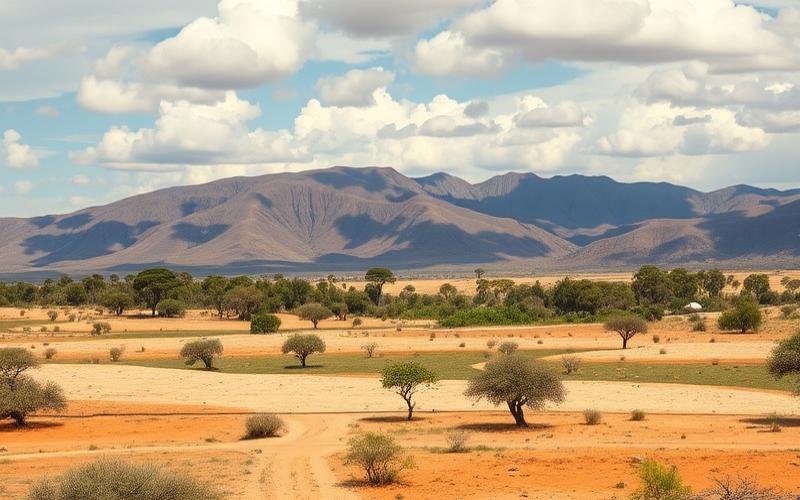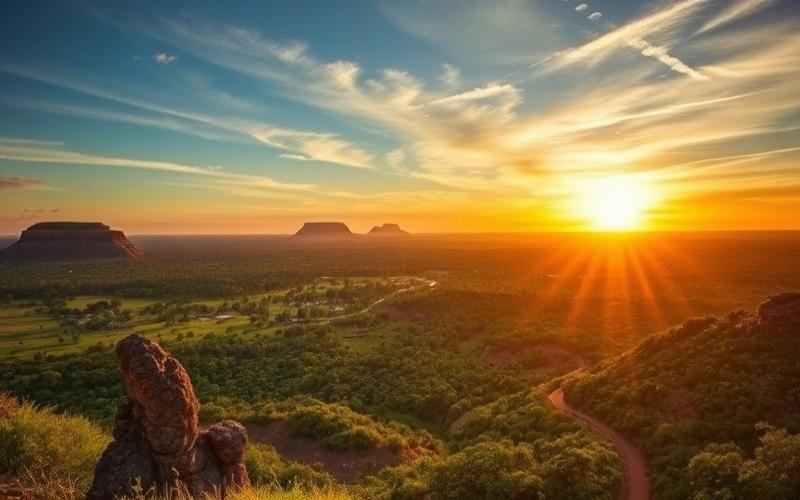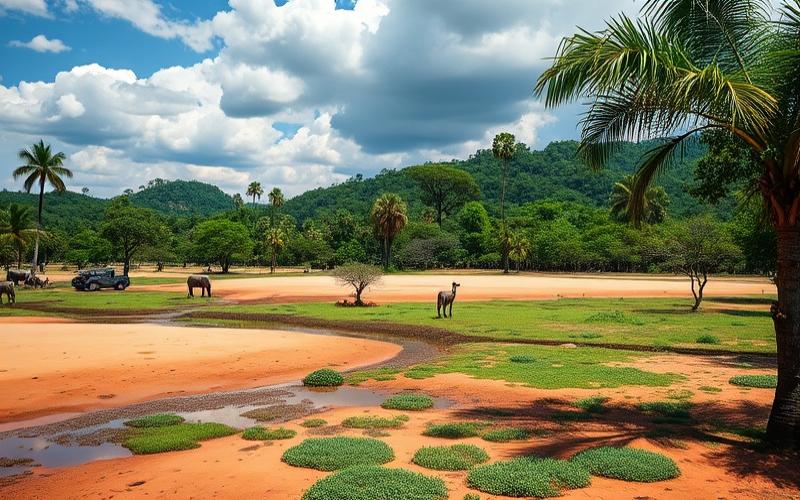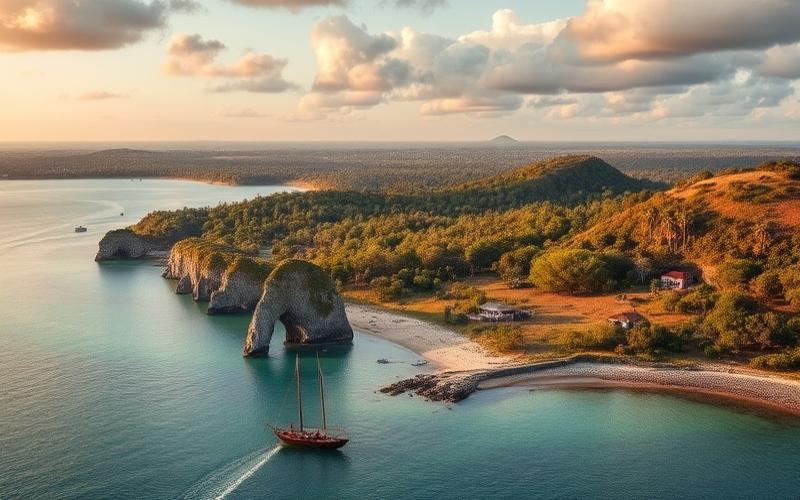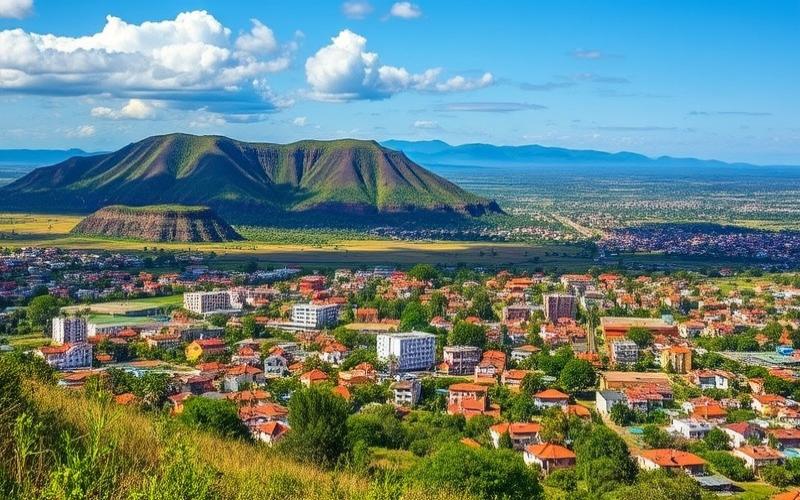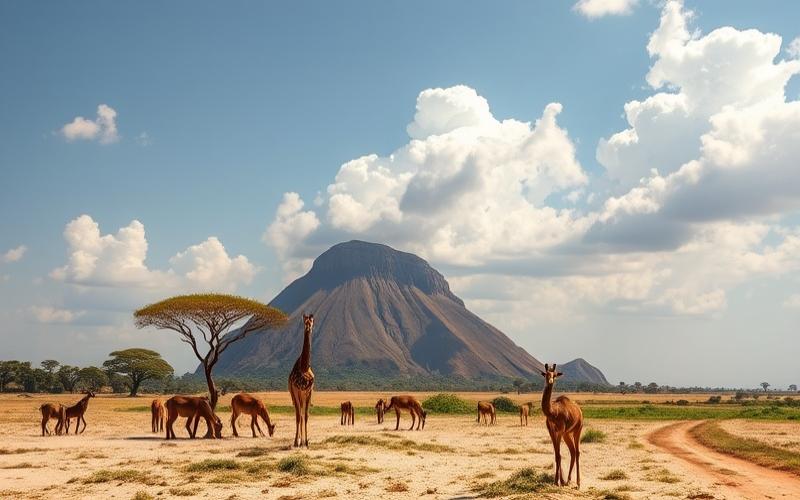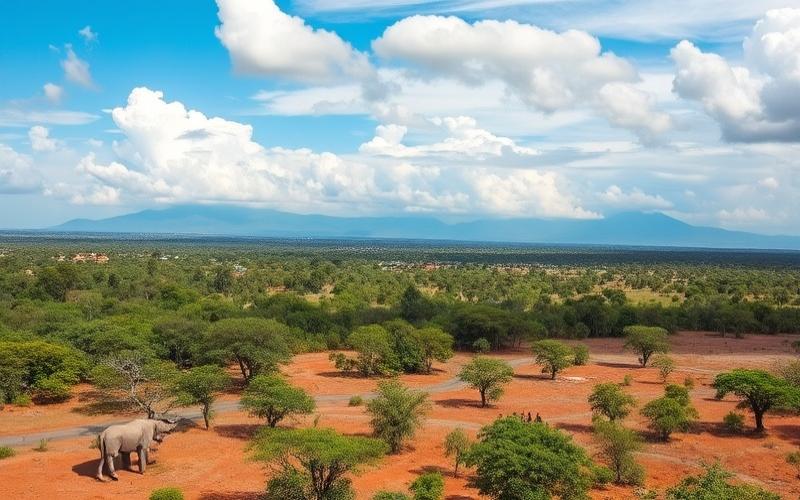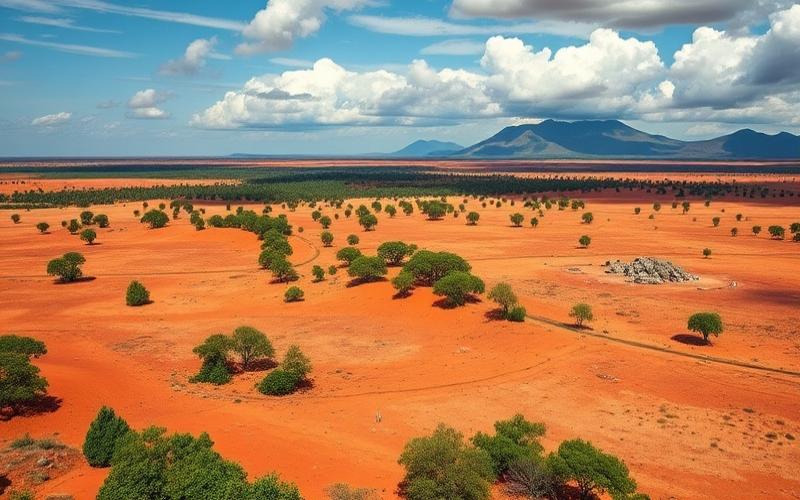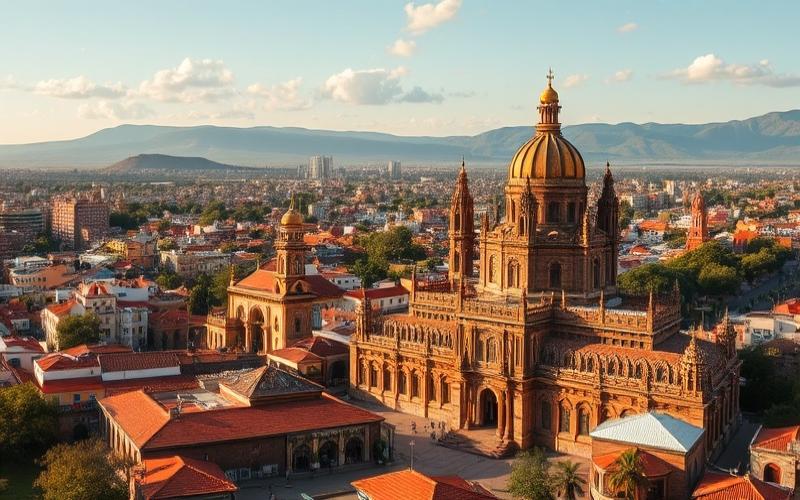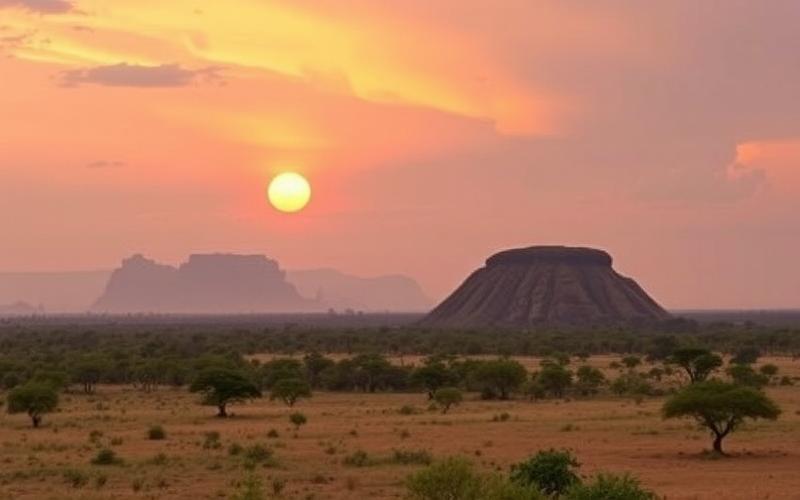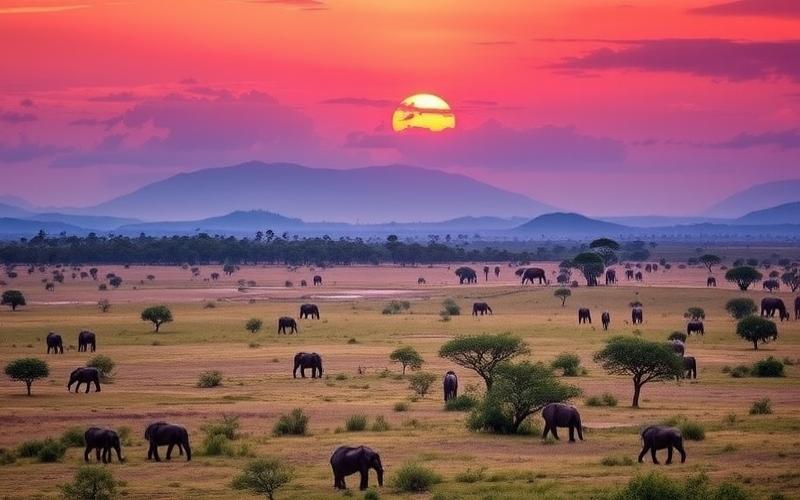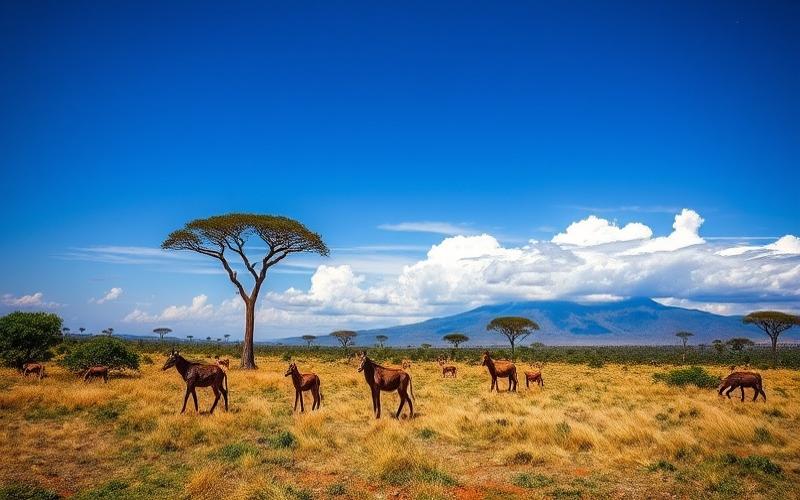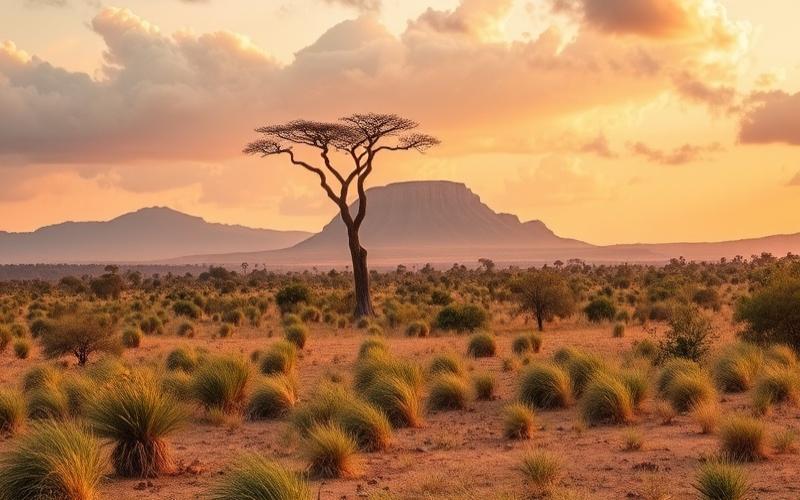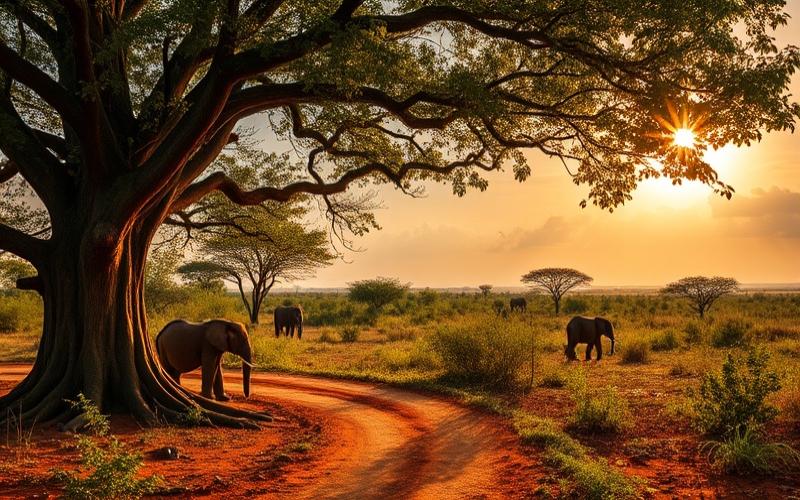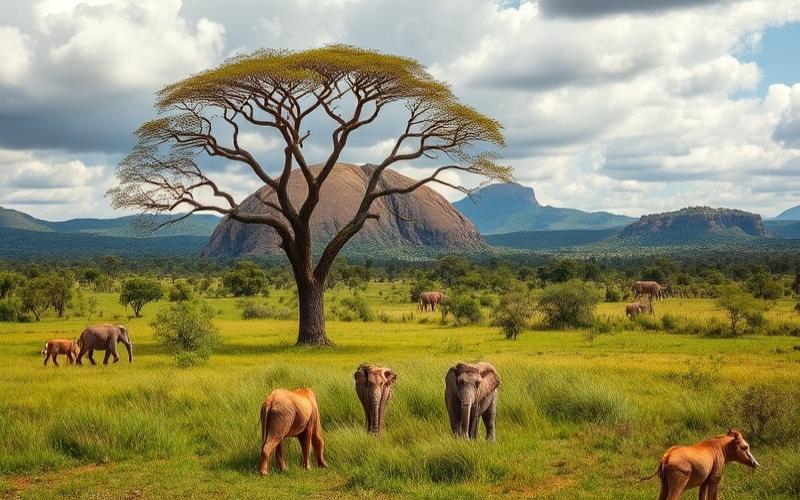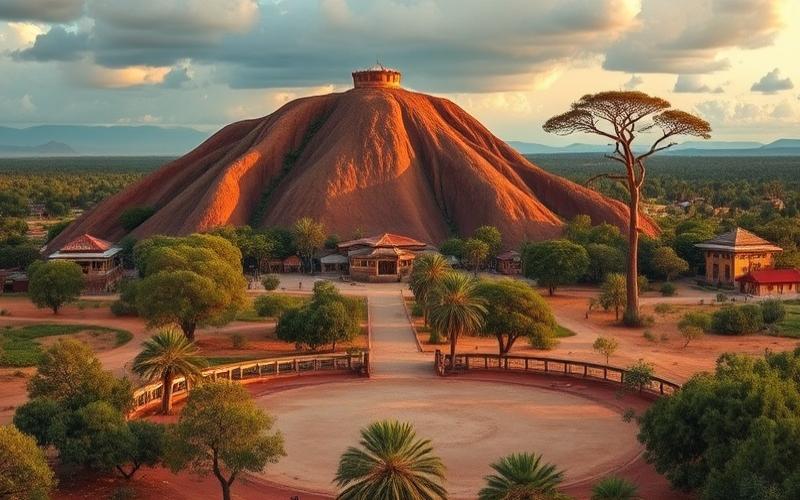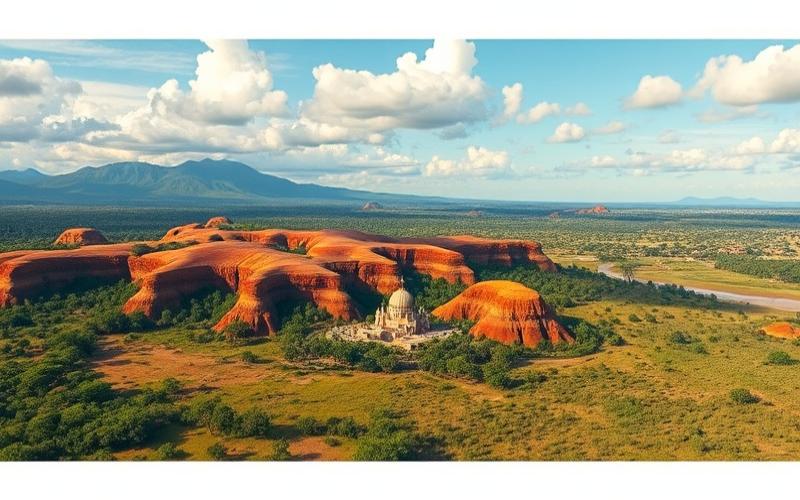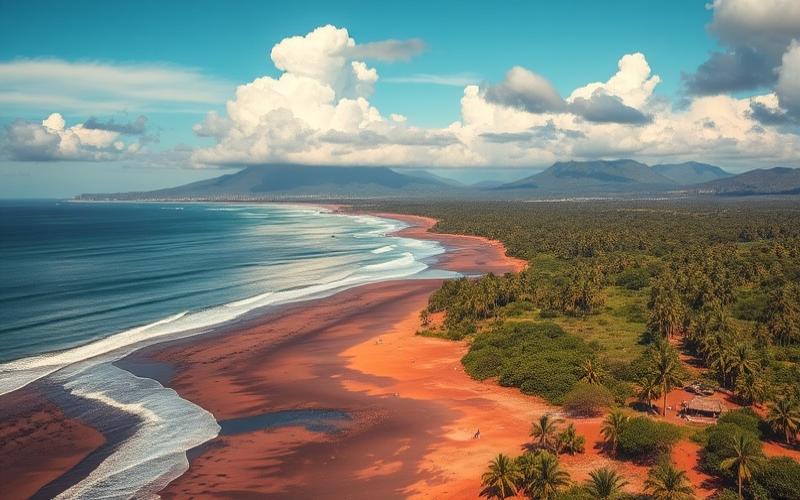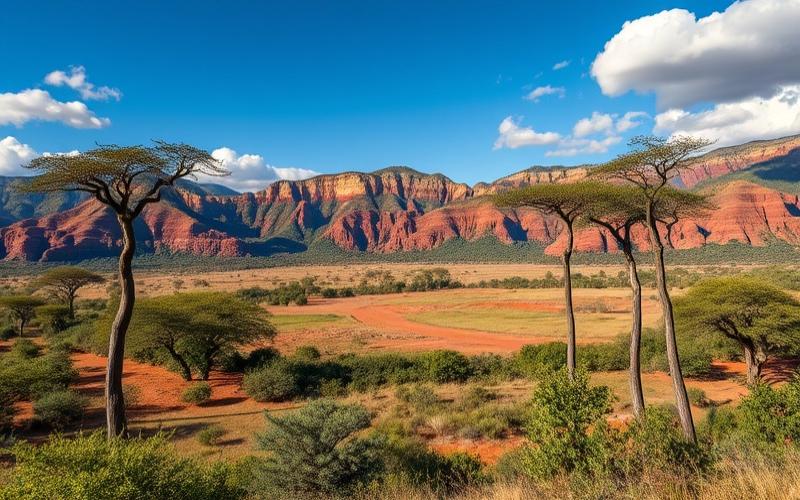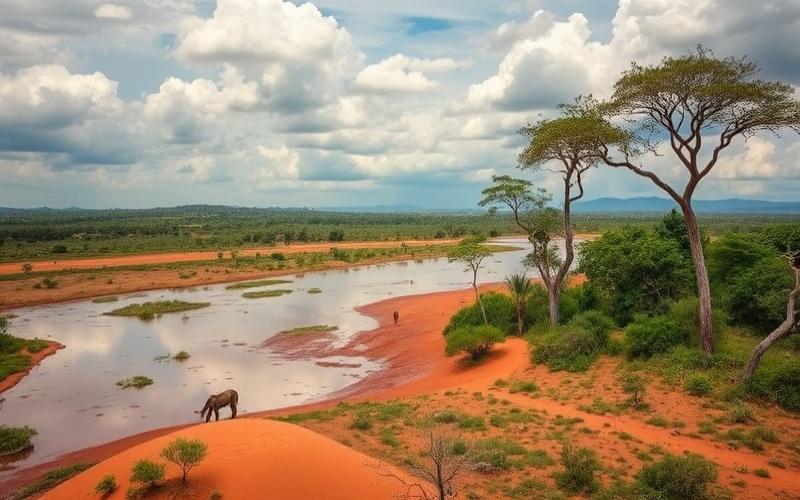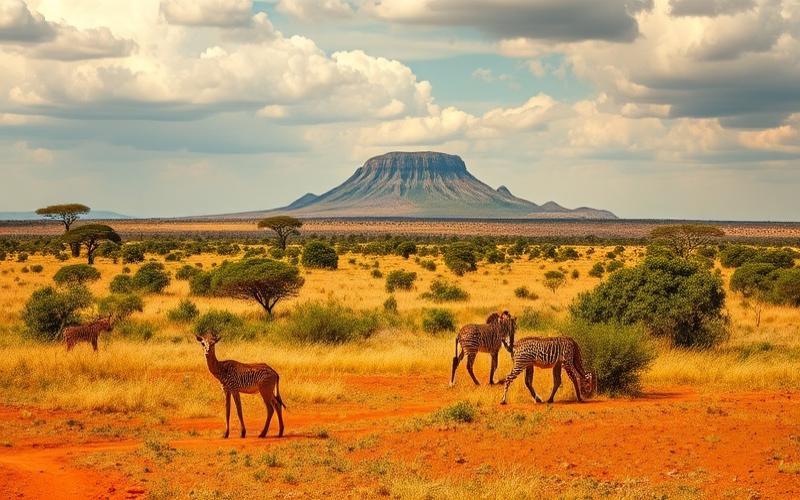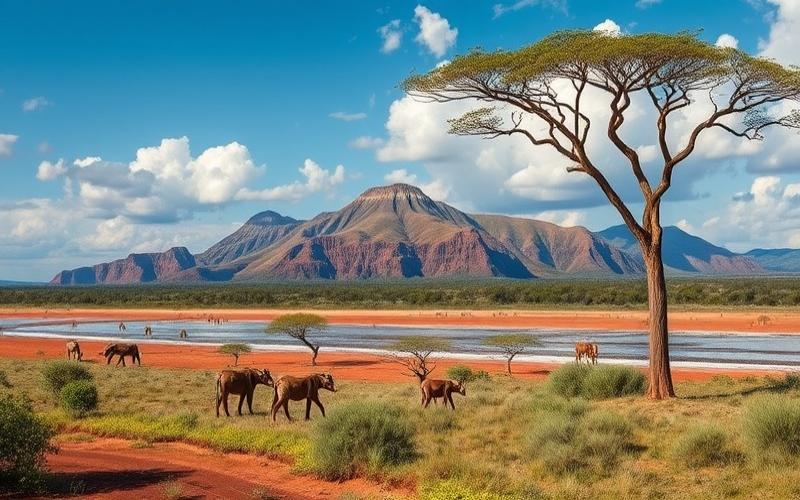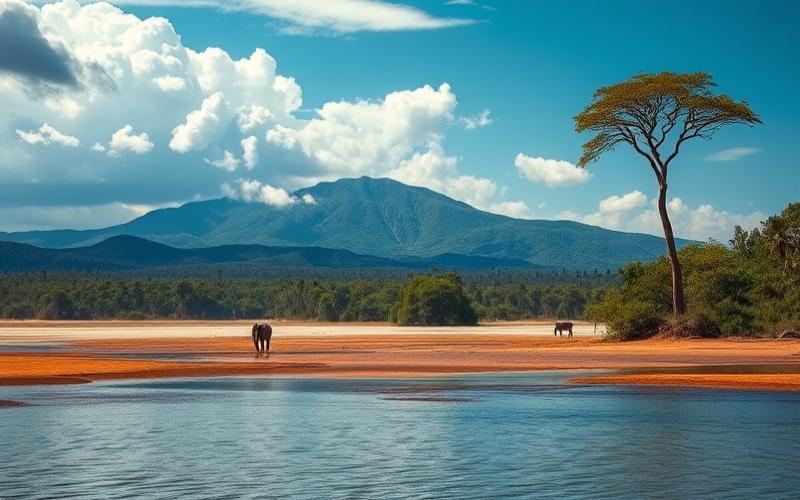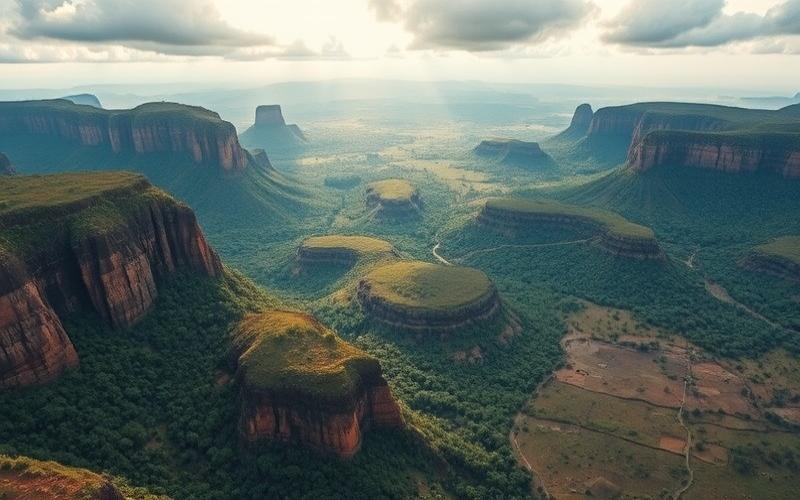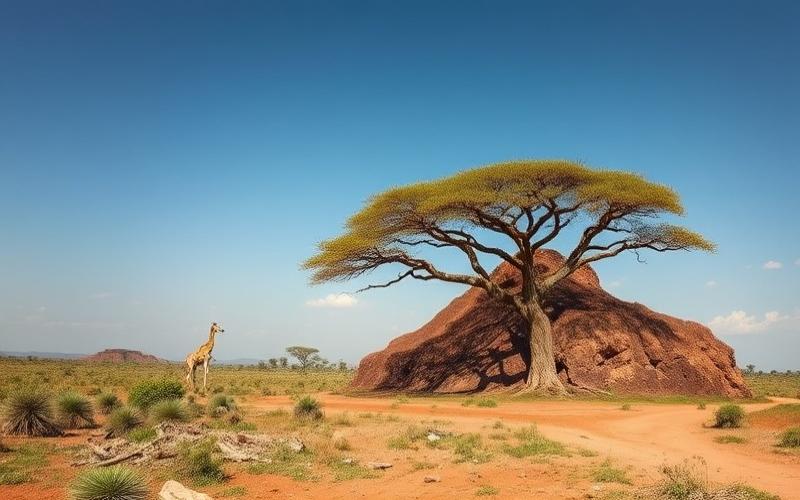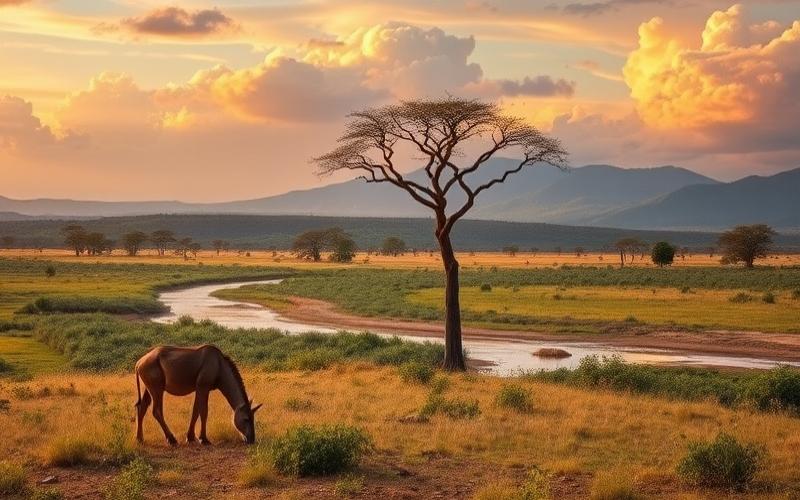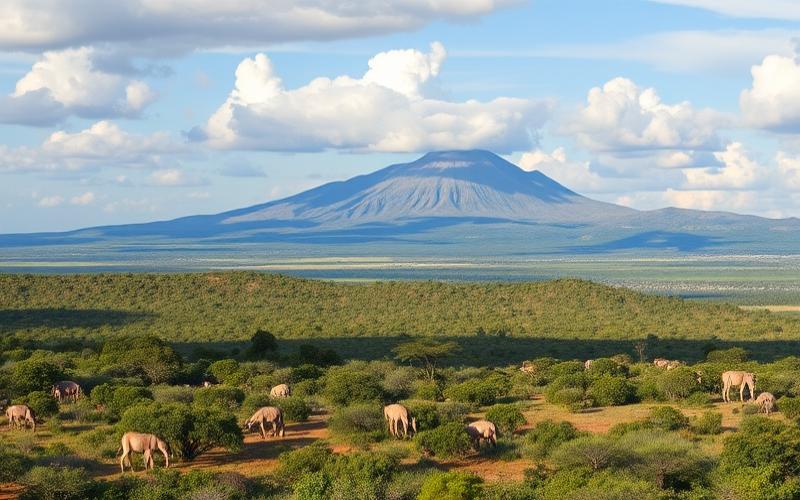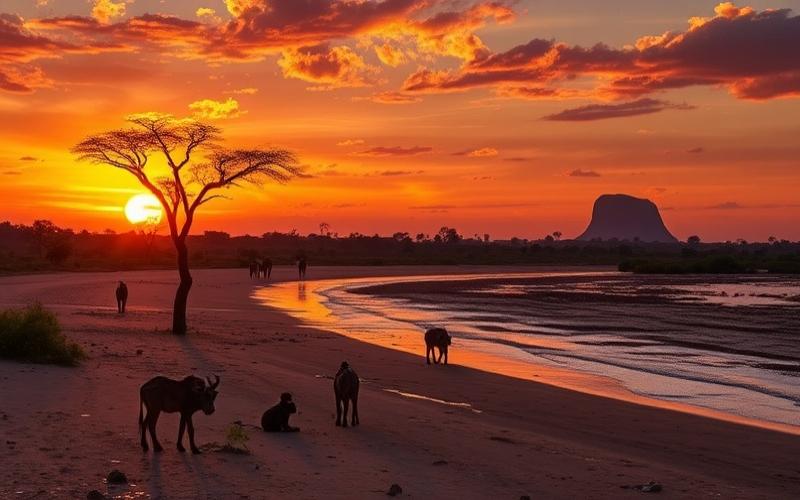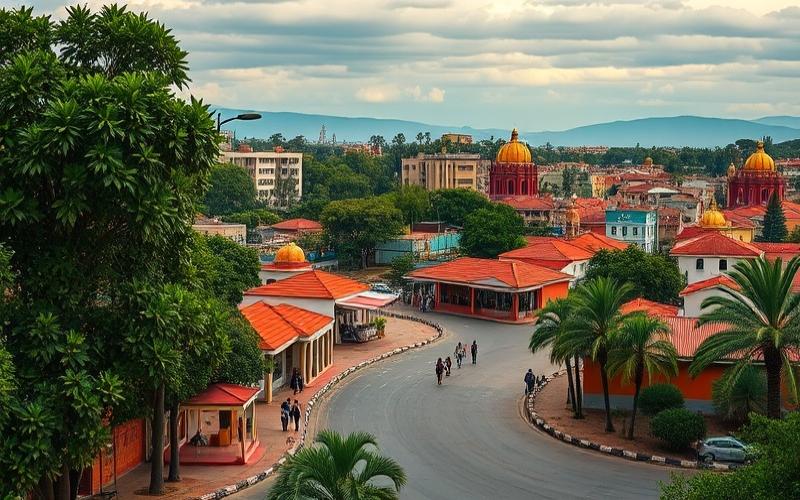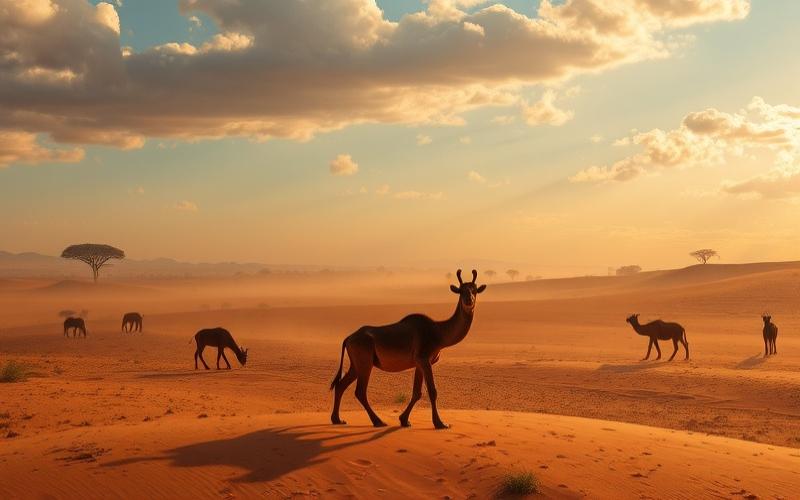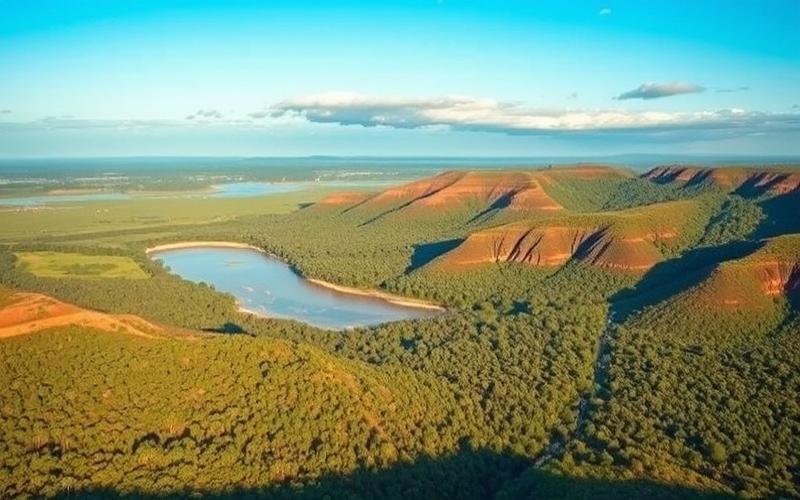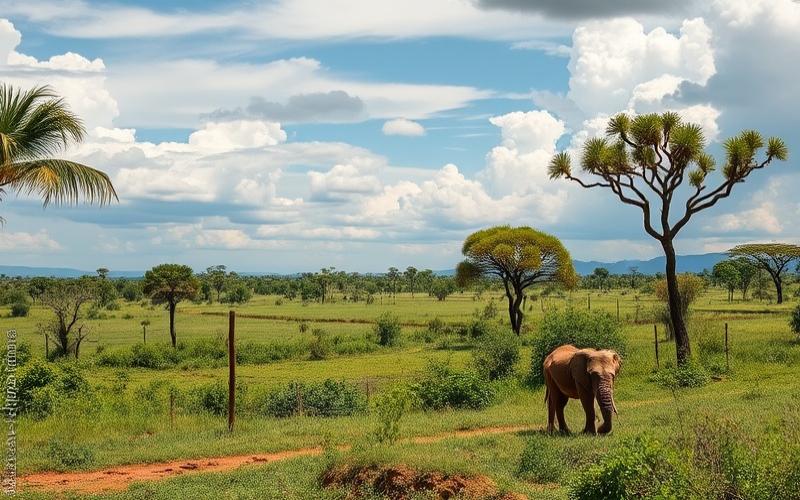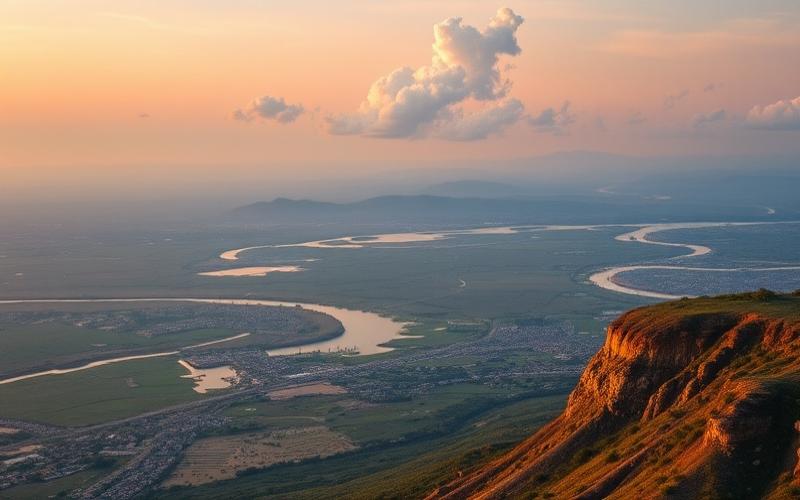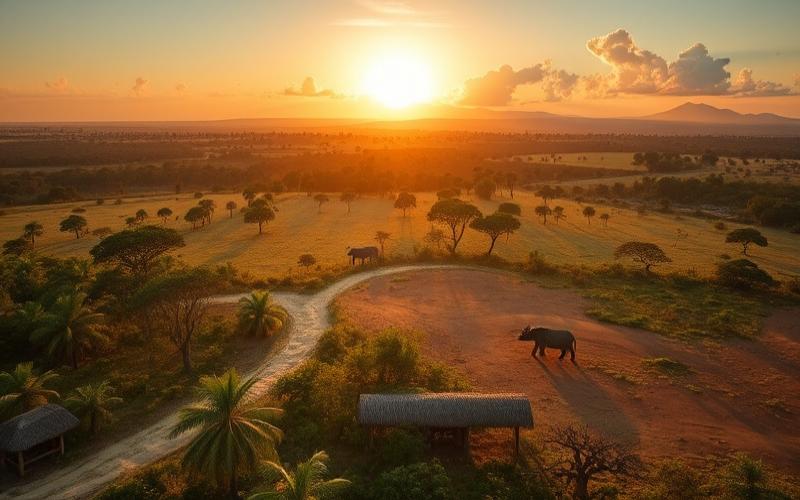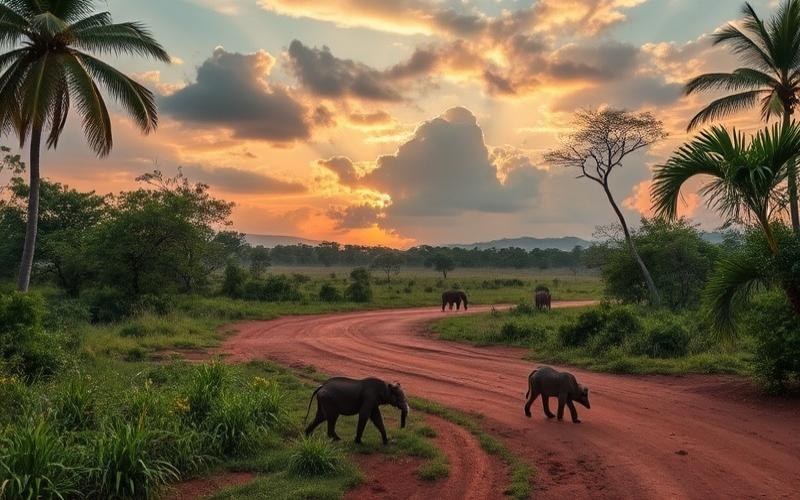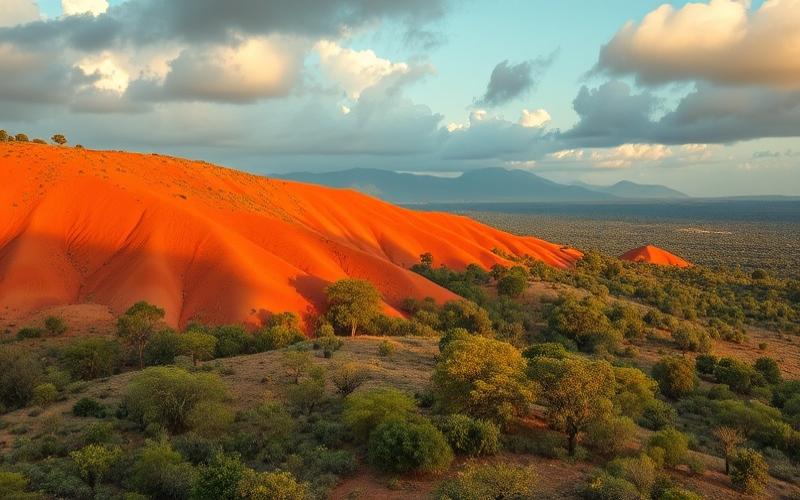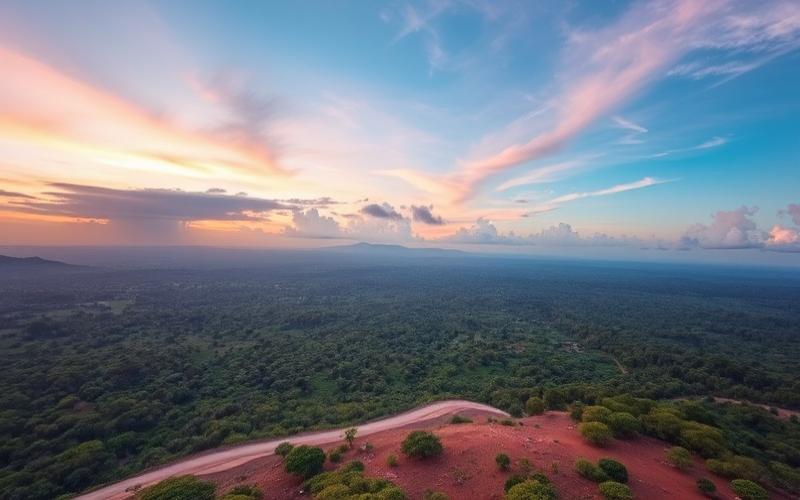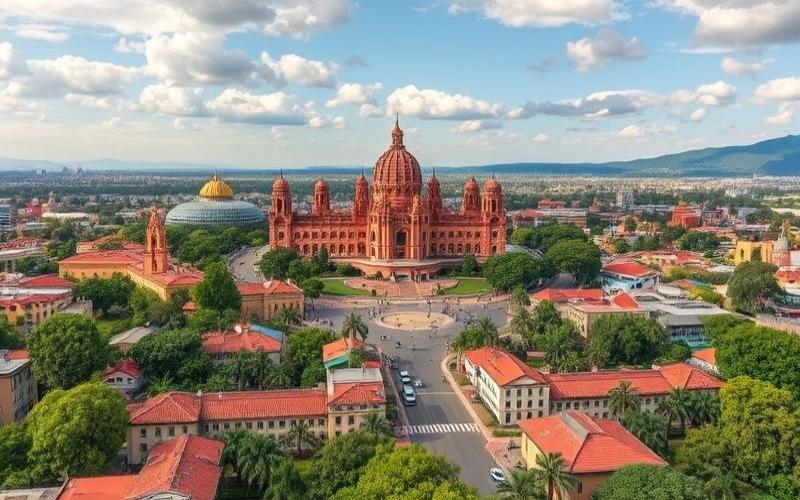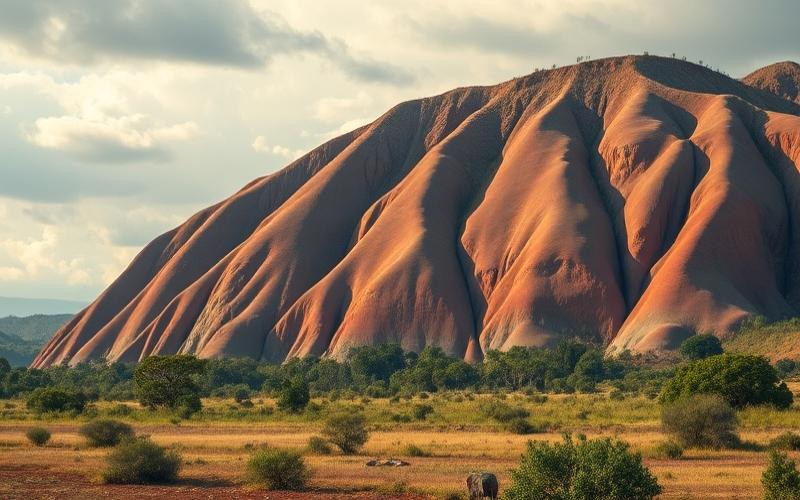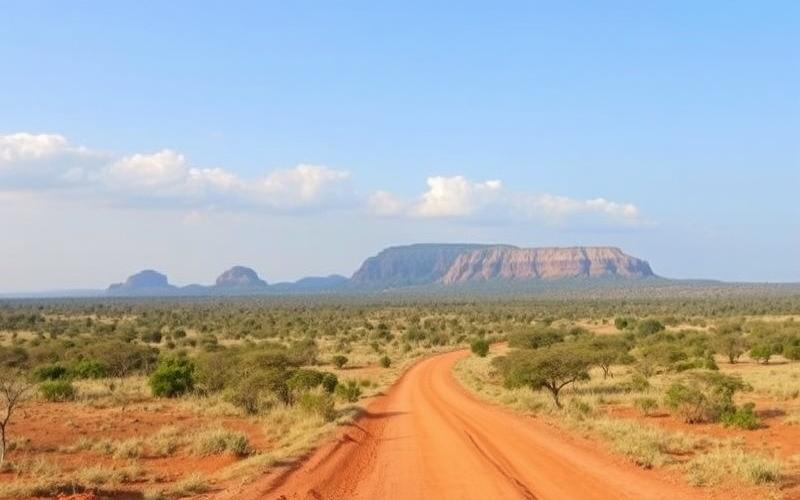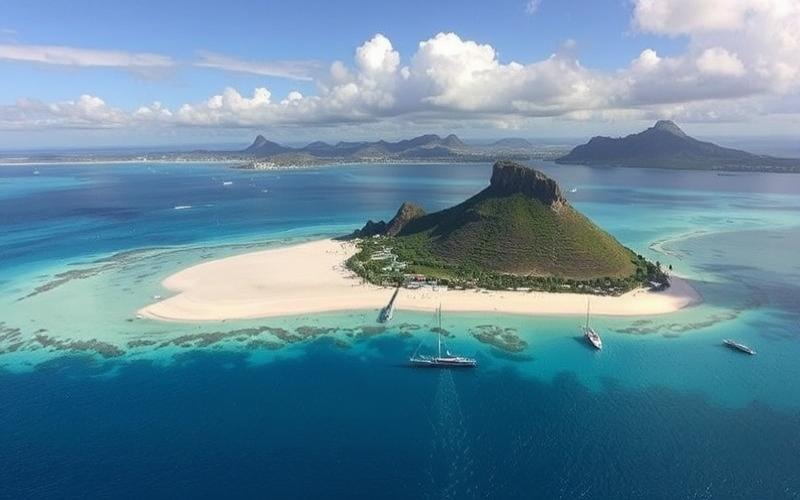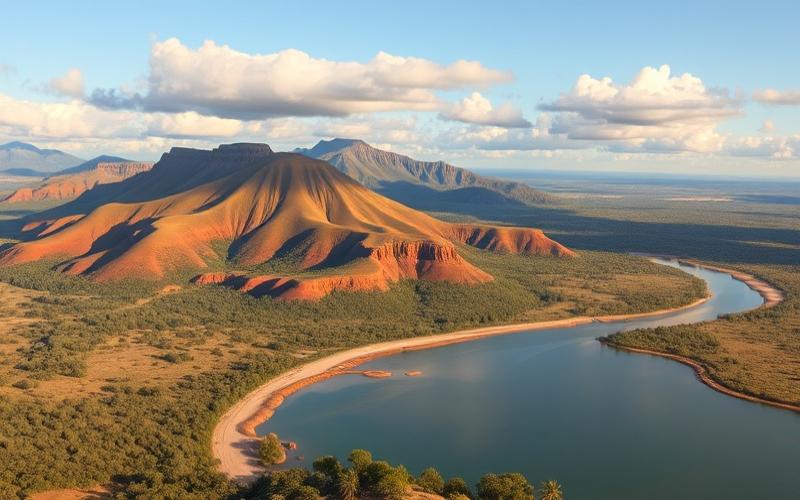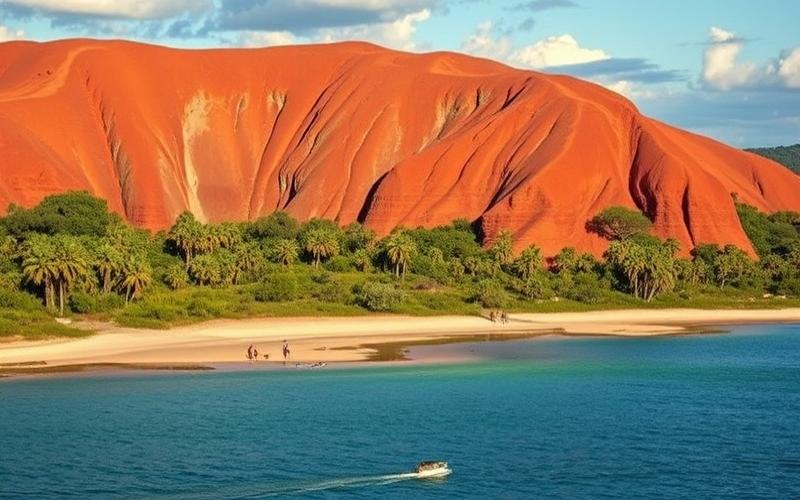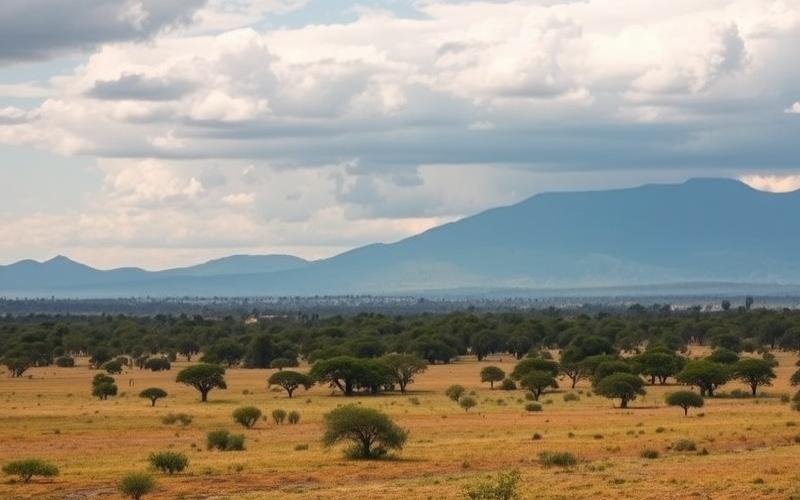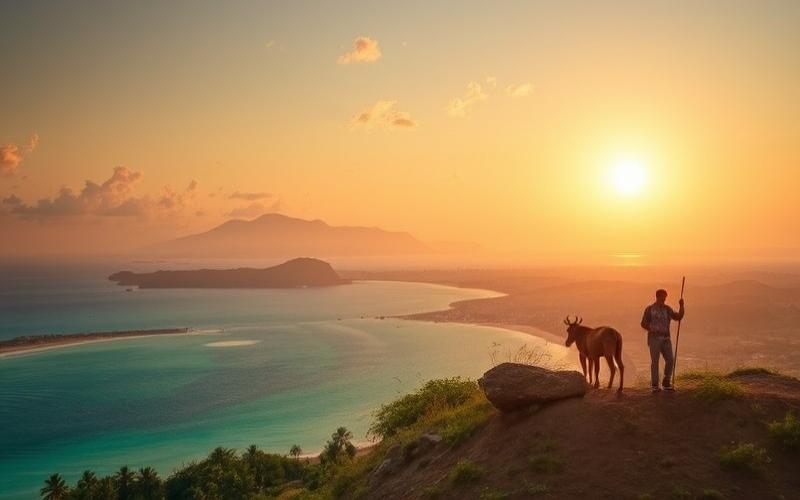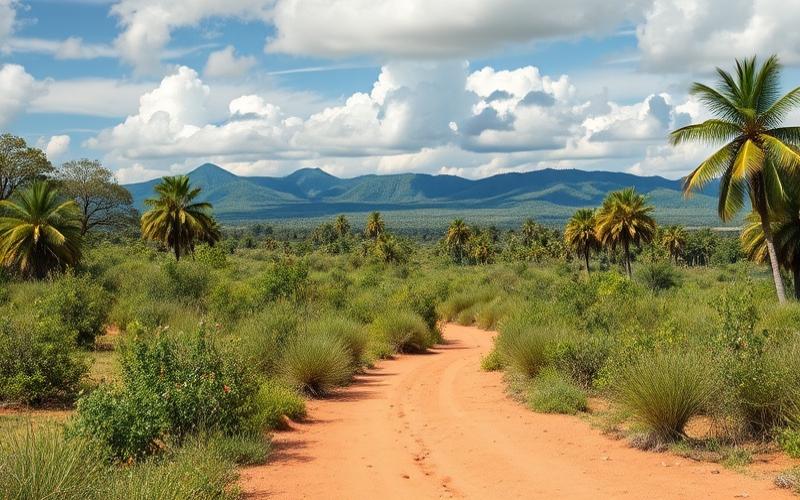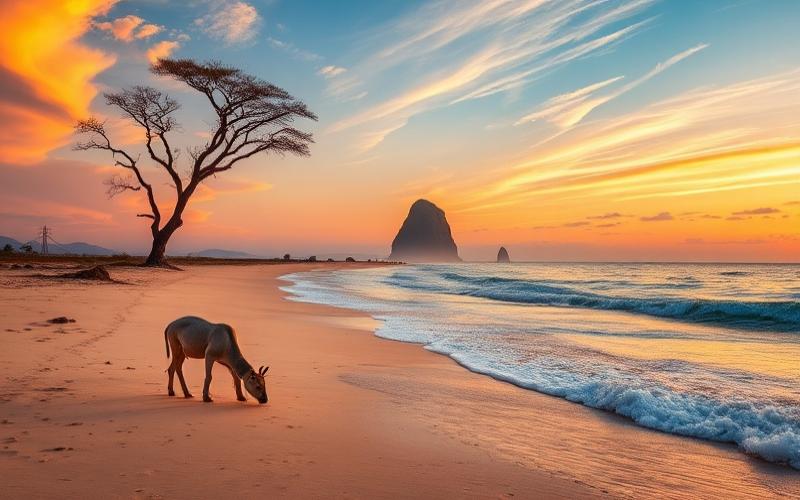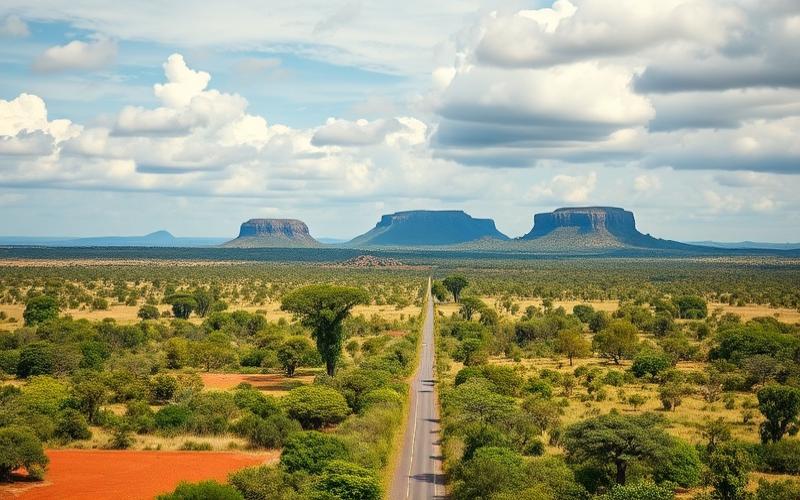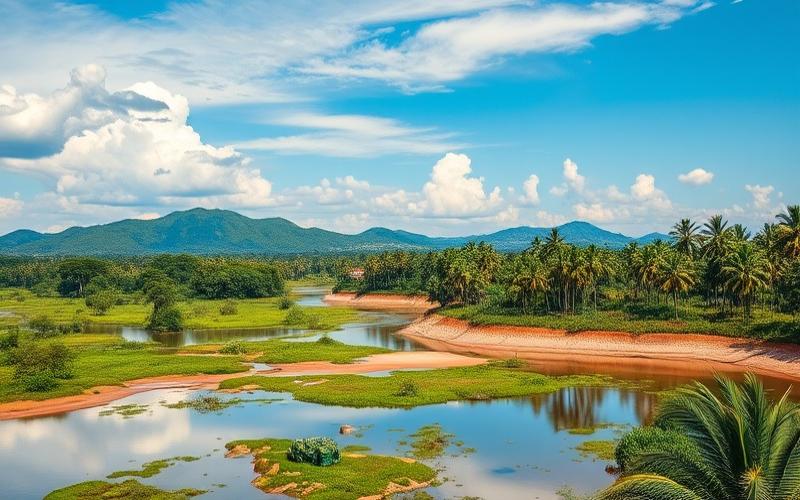
 Published on and written by Cyril Jarnias
Published on and written by Cyril Jarnias
In a world where the pursuit of authenticity and a return to simpler lifestyles is gaining momentum, investing in Madagascar’s authentic villages presents an exceptionally rich opportunity by 2025. This island nation, known for its unique biodiversity and breathtaking landscapes, offers incredible potential for those looking to engage in projects that are both economically and socially responsible.
Malagasy villages provide an ideal setting for developing sustainable tourism, artisanal, and agricultural activities, capable of generating not only financial benefits but also strengthening and preserving local cultural and natural heritage. While some regions of the world are rapidly modernizing, Madagascar remains a treasure trove of intact traditions, appealing to investors seeking innovative projects.
Madagascar Village Investment: An Untapped Opportunity
Madagascar is increasingly attracting investors in 2025 due to a unique combination of economic and geographic factors that favor the development of rural villages.
Attractive Economic and Geographic Factors:
- Potential access to a vast regional market estimated at 600 million consumers.
- Strategic position at the crossroads of Africa, the Middle East, and Asia.
- Young, dynamic, and competitive workforce.
- Climatic diversity allowing for the cultivation of a wide variety of agricultural products.
Available Natural Resources:
| Resource | Exploitation Potential |
|---|---|
| Fertile soils | Staple crops (rice, corn), export crops (vanilla, cloves, cocoa) |
| Biodiversity | Endemic wildlife and flora promoting ecotourism |
| Mineral resources | Nickel, cobalt, ilmenite |
| Fishery resources | Artisanal and industrial fishing |
| Renewable energy | Hydropower (numerous watercourses), abundant solar energy |
Potential in Key Sectors:
- Agriculture: Development of agropoles in areas like Vakinankaratra or Alaotra-Mangoro with support for organic and fair-trade sectors.
- Ecotourism: Villages near protected areas or reserves like Andasibe/Mantadia have strong appeal for eco-friendly tours. Rich biodiversity provides an ideal setting for eco-lodges or unique nature activities.
- Renewable Energy: Limited access to the national grid opens the door to decentralized micro solar or hydropower plants tailored to village needs.
Challenges Leading to These Untapped Opportunities:
List of main obstacles:
- Often insufficient road infrastructure making access difficult
- Limited access to financing for small rural entrepreneurs
- Low electrification outside major urban centers
- Lack of local value addition for raw resources
These challenges have contributed to keeping some villages in an underdeveloped state despite their strong natural potential.
Concrete Examples of Promising Villages & Model Initiatives:
Comparative table:
| Village/Region | Key Sector | Untapped Potential | Successful/Model Initiative |
|---|---|---|---|
| Andravola | Agriculture/Agropole | Extensive arable land | Establishment of pilot Agricultural Investment Zone (ZIA) |
| Vakinankaratra | Agriculture | Understructured dairy sector | Modernized cooperatives supported by PPP |
| Anakao/Tuléar South | Ecotourism | Preserved coastline | Eco-built lodges with local community |
Numerous investment zones (ZIA – Agricultural Investment Zones) are emerging around structuring rural hubs; they already benefit from positive returns on local employment and municipal tax revenues.
Expected Impact on Local Conditions & Contribution to Sustainable Development:
- Direct creation of skilled/unskilled jobs
- Improved local infrastructure (secondary road network/energy access)
- Increased village income through local processing of agricultural products
- Enhanced technical capacities through public/private partnerships
- Better environmental management through adoption of sustainable practices
Responsible investments can sustainably transform the rural socio-economic fabric of Madagascar while preserving its unique natural resources. Successful pilot experiences now serve as replicable models elsewhere on the Great Island.
Good to Know:
Madagascar’s villages present a unique untapped opportunity for 2025 due to their rich natural resources and development potential in several sectors. Economically, the island offers fertile ground for sustainable agriculture, ecotourism, and renewable energy. However, the lack of modern infrastructure and funding are key challenges to overcome. For example, villages such as Ifaty with its ecotourism potential or Ambalavao, known for its agricultural traditions, could benefit from targeted investments. Initiatives like those in Ankazobe, where reforestation projects have already shown economic and ecological gains, can serve as inspiring models. Investing in these communities could significantly improve local living conditions while promoting sustainable development beneficial in the long term for the entire region.
The Appeal of Rural Real Estate in Madagascar: Potential and Profitability
Madagascar holds strong appeal for real estate investors in rural areas due to several distinctive factors:
- Availability of vast land at competitive prices
- Gradual development of infrastructure
- Government incentives for rural development
Attractiveness Factors
| Factor | Detail |
|---|---|
| Land prices | Rural land remains affordable, offering a lower entry cost compared to urban areas. |
| Plot sizes | Proposed areas are generally larger, ideal for agricultural or tourism projects. |
| Appreciation potential | Gradual development of roads, power grids, and internet access promotes value increase. |
| Government incentives | Public policies focused on supporting rural areas, notably through participatory planning. |
Profitability Potential
Potential profitability is based on several dynamics:
- Rise in ecological and cultural tourism: Madagascar attracts more ecotourists each year seeking authentic experiences related to the country’s unique biodiversity.
- Sustainable development initiatives: Eco-construction (local materials, traditional techniques) appeals to an international clientele sensitive to environmental impact.
- Opportunities in agriculture: Growing demand for organic products and responsible supply chains opens the way for modern export-oriented farms.
Recent Projections and Statistics
- In 2023, nearly 59% of Madagascar’s population still lived in rural areas.
- However, rapid urbanization is observed with projections indicating that before 2050, the number of urban dwellers could exceed that of rural residents.
- Nearly two million housing units are currently lacking nationwide; this structural deficit affects both cities and some countryside areas attractive for seasonal or long-term rental investment.
Identified Specific Opportunities
- Easy acquisition due to low initial cost
- Strong latent demand linked to chronic lack of suitable residential supply
- Possible diversification: green tourism (lodges), certified organic agriculture, sustainable alternative housing
Associated Challenges and Risks
- Limited access to formal financing for some local investors
- Administrative delays in certain land or permit processes
- Risk related to temporary or partial lack of essential infrastructure in targeted regions
- Gradual migration to cities potentially limiting future rural population growth locally
Key Takeaway
Malagasy rural real estate combines low initial costs and high appreciation possibilities thanks to ecotourism and sustainable agricultural dynamics. However, it is also a market exposed to structural challenges (incomplete infrastructure) as well as rapid demographic shifts that are gradually redistributing its potential between urban and rural areas.
Good to Know:
In Madagascar, rural real estate is increasingly attracting investors due to vast land at competitive prices and gradual infrastructure development, supported by the government to promote rural development. The rise of ecological and cultural tourism, combined with sustainable development initiatives, offers significant profitability prospects, particularly through organic agriculture and eco-construction. In 2023, the rural real estate sector recorded 15% growth in some regions, according to recent statistics, illustrating growing attractiveness. However, challenges remain, such as still limited infrastructure in some areas and an evolving legislative framework, requiring careful analysis and rigorous market trend monitoring to mitigate risks associated with investing in this promising yet complex sector.
Preserving Heritage Authenticity While Investing
Madagascar is at a pivotal moment in its history regarding heritage conservation. The year 2025 marks a period of significant initiatives aimed at preserving cultural authenticity while promoting economic development through strategic investments.
Recent initiatives like the inscription of the Dry Forests of Andrefana as a UNESCO World Heritage site, celebrated on May 26, 2025 in Befandefa, testify to national commitment to conservation. This international recognition creates a framework conducive to heritage-respectful investments.
Strategies for Preserving Authenticity
The Franco-Malagasy collaboration initiated in October 2024 and strengthened in April 2025 constitutes an important pillar for heritage preservation. This cooperation aims to:
- Strengthen the skills of Malagasy professionals
- Promote expertise exchange for conservation
- Train staff from the Ministry of Culture and teams from Rovan’i Madagasikara
Regulations and Institutional Frameworks
| Organization | Role in Preservation | Ongoing Initiative |
|---|---|---|
| Icomos Madagascar | Reflection on built heritage | Developing a national plan on cultural heritage |
| Ortana | Awareness-raising | “Heritage Classes” program 2025 |
| Wildlife Madagascar | Biodiversity conservation | 2025-2030 Strategic Plan |
Icomos Madagascar is actively working on “Resilient Built Heritage in the Face of Disasters and Conflicts” with the objective of developing a national plan on cultural heritage. This evolving regulatory framework will guide future investments.
Balancing Economic Development and Preservation
The “Heritage Classes” program by the Antananarivo Regional Tourism Office represents an educational approach to raise awareness about preservation issues while preparing future generations to participate in sustainable economic development.
Success Model: Wildlife Madagascar
The 2025-2030 Strategic Plan of Wildlife Madagascar perfectly illustrates the balance between conservation and development:
- Preservation of 10 biologically diverse sites
- Planting of 10 million trees
- Conservation of half of the 112 lemur species
- Construction or rehabilitation of infrastructure for 10 schools
- Creation of five ecotourism facilities
- Food security for local populations
This holistic approach demonstrates how investments can strengthen rather than compromise cultural and natural identity.
Challenges and Innovative Solutions
Main challenges include:
- Demographic pressure on natural resources
- Lack of local technical skills
- Potential conflicts between modernization and preservation
To address these, innovative solutions are emerging:
- Partnerships between local communities, government, and conservation entities
- Use of scientific expertise to restore ecosystems
- Development of ecotourism as a source of sustainable income
- Food security programs for local communities
Wildlife Madagascar’s approach demonstrates that by working directly with local communities, investments can simultaneously preserve natural and cultural heritage while improving inhabitants’ living conditions.
Good to Know:
In Madagascar, preserving heritage authenticity while investing in authentic villages represents a significant challenge. Innovative strategies, such as respectful restoration of traditional architecture and direct involvement of local communities, prove effective in maintaining the cultural and architectural authenticity of villages. Local regulation, often supported by heritage preservation associations, ensures that economic development does not come at the expense of culture and environment. However, the potential impact of investments on the environment and community requires a delicate balance between economic growth and conservation. Success examples include the renovation project of Ambohimanga village, where targeted investments revitalized the local economy while strengthening cultural identity. To overcome common challenges, such as conflicting interests and tourist pressure, it is crucial to adopt sustainable practices, such as participatory planning and integration of ecological solutions. These initiatives not only ensure investment viability but also enrich the cultural experience, consolidating Madagascar’s reputation as an authentic and sustainable destination.
Case Studies: Successful Investments in Malagasy Villages
Concrete examples of successful initiatives
| Project | Sector | Location/Scope | Economic and Social Impacts |
|---|---|---|---|
| WeLight Solar Mini-Grids | Energy/Rural Electrification | 120 villages (250,000 people) | Creation of small businesses, increased local income, improved access to health and education, enhanced security through public lighting |
| Community Savings Groups | Microfinance/Local Development | Village (165 households) | Access to credit to launch income-generating activities, strengthened social cohesion |
Testimonials
“My life has changed,” explains Germaine Lan Yu, artisan and shopkeeper in Tsarabaria. Thanks to the freezer powered by the solar mini-grid, she attracts more customers by selling cold drinks. Her income has increased, allowing her to improve her family’s living conditions.
A member of the community savings group testifies: “The groups have allowed us not only to save but also to invest in our small businesses or crops; this changes our daily lives.”
Key Success Factors
- Close collaboration with local authorities to facilitate infrastructure installation or management of collective funds.
- Active involvement of NGOs and international institutions (e.g., European Investment Bank for WeLight), providing technical expertise and initial funding.
- Local ownership: training villagers in technical maintenance or financial management.
Overcome Challenges
- Difficult access to remote areas required adapted logistics to transport electrical equipment or organize financial meetings.
- Initial distrust of new technologies or financial systems was overcome through regular educational support.
- Economic viability sometimes depended on reaching critical mass (sufficient number of subscribers to power grids; group members).
Lessons Learned & Effective Strategies in 2025
- Involving all local stakeholders from the start increases collective buy-in to the project.
- Bet on a modular approach: starting small then expanding according to real demand allows gradual adaptation without overexposing financial risk.
- Accompany each innovation with continuous awareness-raising to ensure sustainable ownership.
The Malagasy experience shows that targeted investment in clean energy, microfinance, or crafts can sustainably transform the rural economic fabric while significantly improving daily quality of life.
Good to Know:
In Antsaravibe village, an investment project in organic agriculture transformed residents’ lives by increasing their income by 30% in three years, thanks to support from local authorities and international NGOs. In Moramanga, the rise of sustainable tourism, supported by local businesses, created jobs and preserved cultural heritage, while encouraging youth to return to their home villages. A thriving craft industry in Ambalavao illustrates how developing cooperatives allowed women to gain significant economic autonomy. Investor testimonials highlight the importance of a participatory approach and good communication with village leaders to overcome initial obstacles such as limited infrastructure access. These initiatives show that well-planned investments can positively change communities and encourage a sustainable and resilient growth model.
Disclaimer: The information provided on this website is for informational purposes only and does not constitute financial, legal, or professional advice. We encourage you to consult qualified experts before making any investment, real estate, or expatriation decisions. Although we strive to maintain up-to-date and accurate information, we do not guarantee the completeness, accuracy, or timeliness of the proposed content. As investment and expatriation involve risks, we disclaim any liability for potential losses or damages arising from the use of this site. Your use of this site confirms your acceptance of these terms and your understanding of the associated risks.

